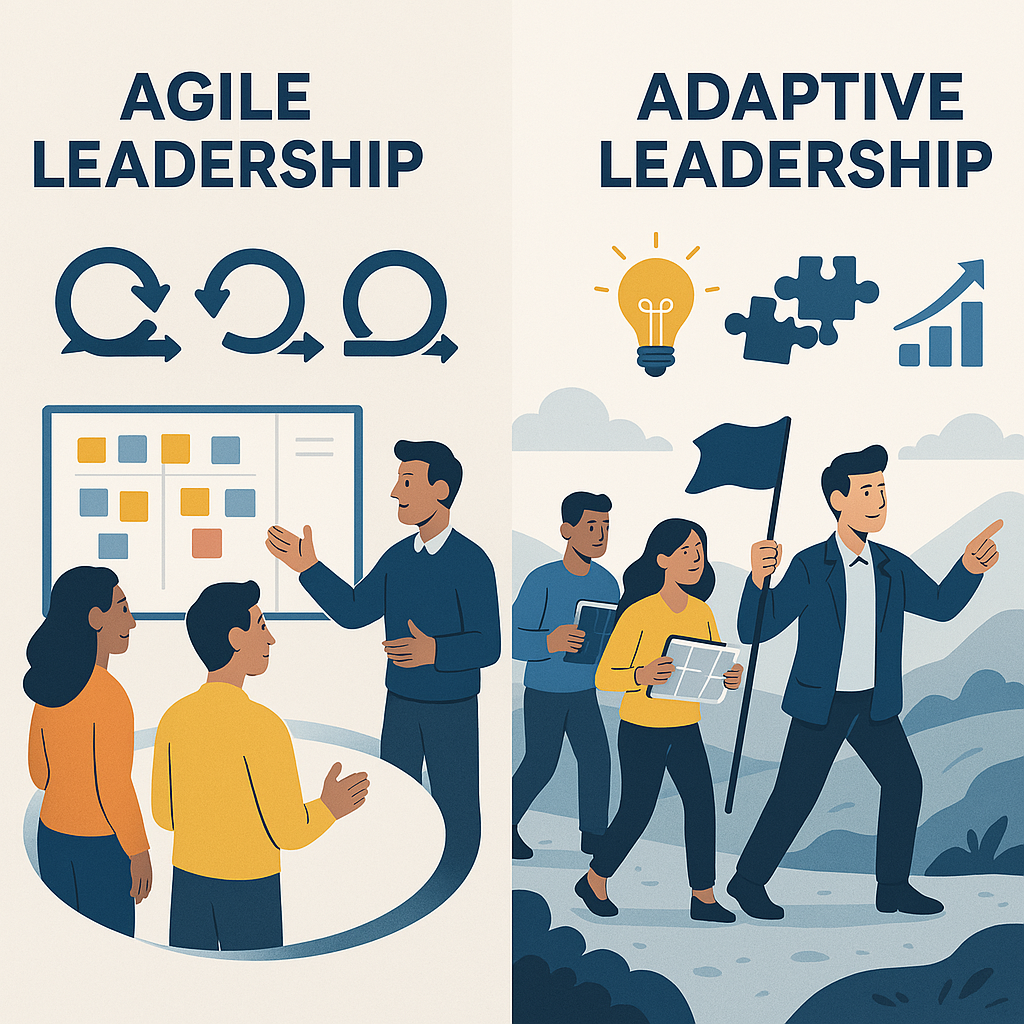
Understanding Traditional Leadership
Definition of Traditional Leadership
Traditional leadership is often defined as a management style characterized by established hierarchies and protocols. This approach typically stems from long-standing organizational cultures where authority is concentrated at the top. Leaders are seen as figures of power, making decisions that trickle down through the ranks. This method seeks stability and predictability, which can be comforting to many team members.
Characteristics of Traditional Leadership
In exploring traditional leadership, several defining characteristics emerge:
- Hierarchy: An emphasis on a clear chain of command, with power concentrated at the upper levels.
- Control: Leaders maintain tight control over processes and decision-making, often limiting input from lower-tier staff.
- Stability: There is a focus on maintaining stability and consistency within the organization, which can stifle creativity.
- Authority: Decision-making authority resides solely with those in leadership positions.
A manufacturing firm may have plant managers who enforce strict rules for consistent quality, showcasing traditional leadership traits.
Challenges Faced in Traditional Leadership
Unfortunately, traditional leadership also comes with its challenges:
- Resistance to Change: Employees may resist new ideas or processes due to rigid structures.
- Limited Innovation: The focus on stability can inhibit creativity and adaptability.
- Communication Barriers: A top-down approach can lead to ineffective communication, creating a disconnect between leadership and frontline employees.
These hurdles can hinder an organization’s ability to navigate an ever-changing market landscape. In the next section, we will explore the rise of agile leadership as an effective response to these challenges.

Rise of Agile Leadership
Definition of Agile Leadership
Agile leadership represents a modern approach to management that emphasizes flexibility, collaboration, and rapid response to change. Agile leaders focus on adaptability and empower their teams to innovate and tackle challenges, unlike traditional leadership styles.ip style empowers team members to take ownership of their roles while promoting trust and openness.
Contrasting Traditional and Agile Leadership
When we look at traditional versus agile leadership, the differences become striking:
- Decision-Making:
- Traditional: Centralized and top-down.
- Agile: Decentralized, promoting team input and collaboration.
- Adaptability:
- Traditional: Slow to change due to rigid structures.
- Agile: Quickly adapts to new information and environments.
- Employee Engagement:
- Traditional: Minimal involvement of employees in decision-making.
- Agile: High involvement, fostering a sense of ownership.
For example, consider a tech startup that allows developers to propose and test new features rapidly. Their agile structure encourages quick pivots based on user feedback, unlike a conventional firm stuck in its annual planning cycle.
Benefits of Agile Leadership in the Digital Age
In today’s fast-paced digital landscape, the benefits of agile leadership resonate deeply:
- Increased Innovation: By empowering teams to take risks, organizations foster creativity.
- Faster Decision-Making: Agile structures reduce bureaucratic delays, allowing organizations to pivot quickly.
- Enhanced Collaboration: Teams work across departments, breaking down silos for better communication.
Agile leadership equips organizations to handle digital disruptions and promotes success in a fast-paced, innovative environment.eeper into transforming towards agile leadership next, the potential for organizational growth emerges clearly.

Transformation Towards Agile Leadership
Importance of Embracing Change
As organizations transition towards agile leadership, embracing change becomes a cornerstone of this transformation. In today’s rapidly evolving business landscape, clinging to outdated practices can hinder growth and promote stagnation. Embracing change means adopting a mindset that welcomes new ideas and methods. For instance, at one organization I worked with, shifting to an agile model was met with resistance initially. However, once leaders articulated change as an opportunity rather than a threat, employee buy-in significantly improved.
- Fostering a Growth Mindset: Encouraging employees to view challenges as opportunities for development.
- Flexibility in Processes: Allowing teams to pivot quickly in response to shifting circumstances.
Developing an Agile Mindset
An agile mindset is essential for success in an agile framework. This involves fostering qualities such as resilience, curiosity, and collaboration within teams. Employees should be encouraged to challenge the status quo and explore innovative solutions.
- Learning from Failures: Encourage teams to learn and iterate from their mistakes.
- Collaboration Over Competition: Promote teamwork rather than individual accolades.
Companies like Spotify and Zappos have succeeded by integrating an agile mindset into their culture, not just by using agile practices.
Role of Communication in Agile Leadership
Communication plays an integral role in agile leadership. In agile environments, open and transparent dialogue enhances collaboration and trust among team members. Regular check-ins, feedback loops, and an open-door policy foster an atmosphere where ideas can flow freely.
- Frequent Updates: Utilizing daily stand-ups or weekly reviews to track project progress.
- Constructive Feedback: Promoting a culture where feedback is seen as a pathway to improvement, not criticism.
As organizations embrace this communicative approach, they become better positioned to navigate change effectively. The next step is to focus on implementing agile leadership strategies to solidify these principles.
Implementing Agile Leadership in Organizations
Strategies for Implementing Agile Leadership
Implementing agile leadership effectively requires a well-defined strategy. The following steps can guide organizations through this transition:
- Start with Training: Invest in training sessions that reflect agile values and principles. Workshops focused on scrum practices can set the tone.
- Pilot Projects: Initiate a few pilot projects using agile methodologies to demonstrate success before a full rollout. This approach minimizes risk while showcasing the benefits.
- Empower Teams: Encourage autonomy by giving teams the authority to make decisions. This fosters ownership and accountability.
I once worked with a marketing team that implemented agile methodologies on a small project. The shift not only improved their workflow but also resulted in a fresh, innovative campaign that exceeded expectations.
Overcoming Resistance to Change
Resistance to change is a common hurdle when moving towards agile leadership. Addressing concerns early can pave the way for a smoother transition:
- Communicate Clearly: Make sure all team members understand the reasons for the shift and the benefits of agile.
- Involve Employees: Engage them in the transformation process, allowing them to voice concerns and suggest improvements.
In a previous organization, regular feedback sessions proved to be indispensable when staff were initially resistant to change. Over time, their involvement cultivated enthusiasm about the agile approach.
Fostering Innovation and Adaptability
To truly harness agile leadership, organizations must prioritize innovation and adaptability. Here are some tips:
- Encourage Experimentation: Create an environment where team members can test new ideas without the fear of failure.
- Adapt Processes Quickly: If things are not working as planned, be prepared to pivot and alter your strategies accordingly.
Organizations that promote a culture of innovation can not only adapt to change but also become leaders in their fields. As we explore nurturing agile leaders next, the transformation becomes even more impactful.

Nurturing Agile Leaders
Identifying and Developing Agile Leaders
Nurturing agile leaders starts with recognizing individuals who possess the potential to thrive in an adaptable and fast-paced environment. These leaders typically exhibit qualities such as flexibility, collaboration, and a strong sense of emotional intelligence.
To identify agile leaders, look for:
- Strong Communication Skills: An ability to articulate ideas clearly and listen actively.
- Problem-Solving Attitude: A knack for addressing challenges creatively and resourcefully.
- Team-Oriented Mindset: A focus on collaboration over competition, valuing group success.
In a previous organization, we discovered a promising team member who excelled under pressure and inspired others. By promoting them into a leadership role, we harnessed their capabilities and elevated team performance.
Training and Mentoring for Agile Leadership
Once identified, fostering agile leaders through training and mentoring becomes crucial. A structured approach includes:
- Hands-On Workshops: Interactive sessions that focus on agile methodologies, such as Scrum or Kanban.
- Mentorship Programs: Pairing emerging leaders with seasoned agile experts fosters knowledge transfer and skill development.
At my last company, we created a mentoring program that connected junior managers with senior agile practitioners, leading to faster professional growth.
Empowering Agile Leaders
Empowering agile leaders involves giving them the resources and autonomy to make impactful decisions. This can be achieved through:
- Delegating Responsibilities: Allowing leaders to make choices for their teams fosters ownership and confidence.
- Providing Resources: Ensure that agile leaders have access to tools and support necessary for implementing innovative ideas.
When leaders feel empowered, they become more engaged and capable of driving change. Next, we’ll discuss how to measure success in agile leadership and strengthen the business case for this approach.

Measuring Success in Agile Leadership
Key Metrics for Agile Leadership
Measuring success in agile leadership requires identifying specific metrics that reflect both team performance and organizational goals. Key metrics may include:
- Velocity: The amount of work a team completes in a given timeframe. This helps gauge productivity and efficiency.
- Customer Satisfaction: Regular feedback from customers can provide insights into how well the team meets their needs.
- Employee Engagement: High levels of engagement can indicate a positive environment and effective leadership.
For example, during a recent project rollout, we tracked velocity through sprint performance. This not only helped us adjust our workload but also increased motivation within the team as they celebrated achieved milestones.
Evaluating the Impact of Agile Leadership
To understand the true impact of agile leadership, it’s essential to evaluate qualitative outcomes alongside quantitative measures. Consider:
- Team Collaboration: Are team members communicating effectively and working together harmoniously?
- Adaptability: How quickly does the team respond to changes or unexpected challenges?
These aspects reflect not just performance but also the cultural shift that agile leadership fosters. An anecdotal case from a previous company demonstrated how improved collaboration led to innovative solutions, enhancing overall project outcomes.
Continuous Improvement in Agile Leadership
Finally, continuous improvement is the cornerstone of agile leadership. Regular retrospectives provide opportunities for teams to reflect on successes and areas for growth.
- Adopt a Feedback Loop: Encourage open discussions to identify both strengths and weaknesses.
- Implement Adjustments: Be prepared to make changes based on team feedback and performance data.
An organization that embraced continuous improvement saw significant gains in productivity. In conclusion, effective measurement and continuous improvement can greatly enhance agile leadership.
Case Studies of Successful Agile Leadership
Real-World Examples of Agile Leadership Transformation
Examining real-world case studies of successful agile leadership can provide invaluable insights. One notable example is Spotify, which implemented agile practices to enhance team autonomy and innovation. Cross-functional squads improved collaboration and sped up responses to customer feedback, leading to a more adaptable business model.
Another example is ING, a Dutch bank that transformed itself by adopting agile working methods. They restructured their teams to function like small startups, eliminating hierarchical bottlenecks, which significantly improved product development and service delivery.
Lessons Learned from Agile Leadership Implementations
From these examples, several lessons emerge about implementing agile leadership:
- Team Empowerment is Key: Giving teams autonomy fosters creativity and ownership of their projects.
- Flexibility is Essential: The ability to pivot quickly in response to market changes is a critical advantage.
- Continuous Feedback Matters: Regular communication loops ensure everyone is aligned and can adapt strategies in real-time.
In my experience, integrating these principles into daily practices can transform team dynamics and improve overall performance.
Best Practices from Agile Leadership Case Studies
Drawing from successful agile leadership case studies, here are some best practices:
- Encourage Experimentation: Allow teams to try new concepts without the fear of failure.
- Maintain Transparency: Open lines of communication promote trust and collaboration.
- Invest in Training: Equip teams with the tools and knowledge to perform effectively in an agile environment.
Organizations can enhance their agility and responsiveness in a changing market by using lessons and best practices from successful transformations. Looking ahead, embracing these insights solidifies the foundation for sustained growth through agile leadership.
For More Information
Check out my AI-generated podcast on adaptive/agile leadership here:




